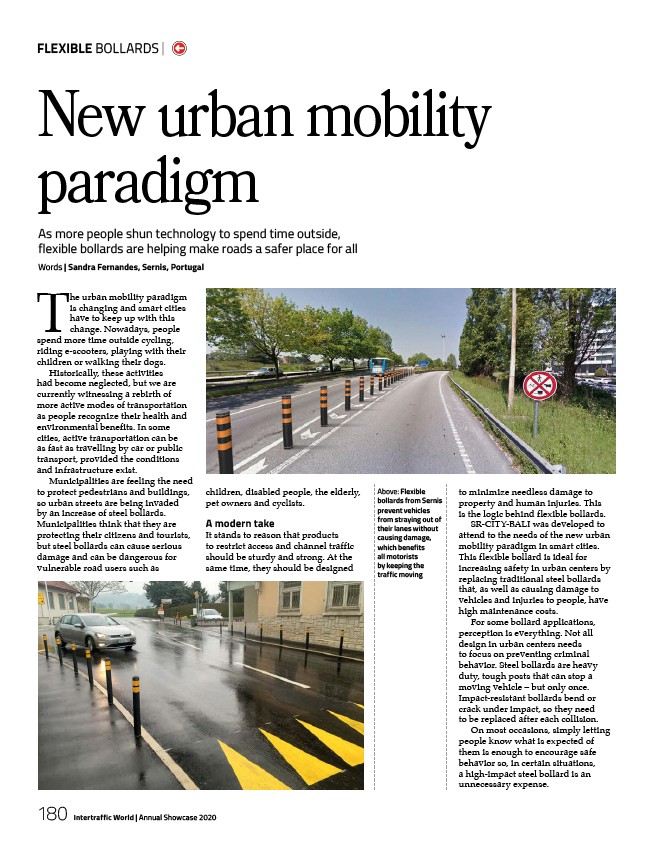
FLEXIBLE BOLLARDS |
New urban mobility
paradigm
As more people shun technology to spend time outside,
flexible bollards are helping make roads a safer place for all
Words | Sandra Fernandes, Sernis, Portugal
The urban mobility paradigm
180 Intertraffic World | Annual Showcase 2020
Above: Flexible
bollards from Sernis
prevent vehicles
from straying out of
their lanes without
causing damage,
which benefits
all motorists
by keeping the
traffic moving
is changing and smart cities
have to keep up with this
change. Nowadays, people
spend more time outside cycling,
riding e-scooters, playing with their
children or walking their dogs.
Historically, these activities
had become neglected, but we are
currently witnessing a rebirth of
more active modes of transportation
as people recognize their health and
environmental benefits. In some
cities, active transportation can be
as fast as travelling by car or public
transport, provided the conditions
and infrastructure exist.
Municipalities are feeling the need
to protect pedestrians and buildings,
so urban streets are being invaded
by an increase of steel bollards.
Municipalities think that they are
protecting their citizens and tourists,
but steel bollards can cause serious
damage and can be dangerous for
vulnerable road users such as
children, disabled people, the elderly,
pet owners and cyclists.
A modern take
It stands to reason that products
to restrict access and channel traffic
should be sturdy and strong. At the
same time, they should be designed
to minimize needless damage to
property and human injuries. This
is the logic behind flexible bollards.
SR-CITY-BALI was developed to
attend to the needs of the new urban
mobility paradigm in smart cities.
This flexible bollard is ideal for
increasing safety in urban centers by
replacing traditional steel bollards
that, as well as causing damage to
vehicles and injuries to people, have
high maintenance costs.
For some bollard applications,
perception is everything. Not all
design in urban centers needs
to focus on preventing criminal
behavior. Steel bollards are heavy
duty, tough posts that can stop a
moving vehicle – but only once.
Impact-resistant bollards bend or
crack under impact, so they need
to be replaced after each collision.
On most occasions, simply letting
people know what is expected of
them is enough to encourage safe
behavior so, in certain situations,
a high-impact steel bollard is an
unnecessary expense.